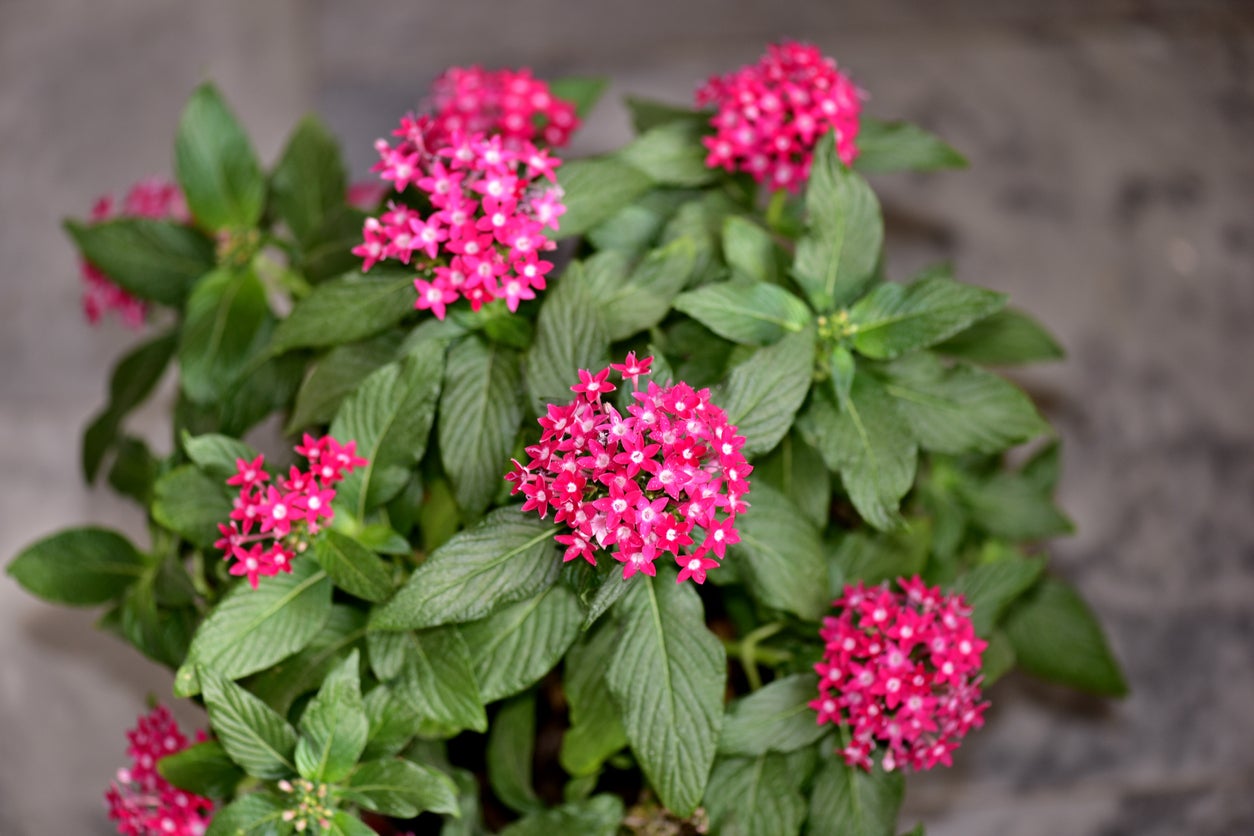Growing Penta Plants: How To Care For Pentas


Planting perennials is an economical way of introducing year-round color and texture in the landscape. Pentas are warm region tropical blooming plants, so called because of the five-pointed petals on the flowers. The plants come in a profusion of colors, so learn how to care for pentas and enjoy their rich jewel tones. When you know how to grow pentas, you have a foolproof way of attracting hummingbirds and butterflies, too.
Pentas Flowers Info
Pentas (Pentas lanceolata) are also called Egyptian stars for the bloom's five-pointed shape. The plant is a shrub that gets up to 6 feet (2 m.) tall and 3 feet (1 m.) wide. It is a scrubby plant with an unruly shape, sporting oval to spear-shaped foliage.
The flowers are generally pink, red, or white but new cultivars have introduced tones of purple and lavender and mixed blooms such as pink with red centers. These plants grow fairly slow and are commonly found as container or bedding plants. Pentas plant care is similar to any warm season perennial.
They are not prone to many diseases and the main pest problem is spider mites. Pentas flowers can be used as annuals during summer in climates colder than USDA plant hardiness zone 10. They will simply die back when the cold weather arrives, or you can try to growing pentas plants indoors.
How to Grow Pentas
If you want more of these delightful plants, they are fairly easy to propagate. Pentas plants grow from seed or from softwood cuttings. Take cuttings in spring from terminal wood and dip the ends into a rooting hormone. Push the cut stem into a soilless medium, such as sand, that has been pre-moistened.
The cutting will root and produce a new plant within a couple of weeks. Growing pentas plants from seed is a quick way to make many of the little plants, but if you want blooms sooner, try the vegetative method.
How to Care for Pentas
Pentas are low maintenance plants. Provided they get plenty of water, sunshine, and heat, they will perform beautifully and reward you with an abundance of blooms. Deadhead pentas flowers to encourage more blooms.
Sign up for the Gardening Know How newsletter today and receive a free copy of our e-book "How to Grow Delicious Tomatoes".
Young pentas plant care should include pinching off the stem ends to force a more compact plant. Fertilize in spring with a slow release granular fertilizer. Mulch around in-ground plants to conserve water and repel weeds.
Save outdoor plants in winter by digging them up and putting them in a container with a good potting soil. Bring them indoors to a warm room with bright light and no drafts. Reintroduce the plant gradually to the outdoors in spring as soon as ambient temperatures are 65 degrees F. (18 C.) or more.

Bonnie Grant is a professional landscaper with a Certification in Urban Gardening. She has been gardening and writing for 15 years. A former professional chef, she has a passion for edible landscaping.